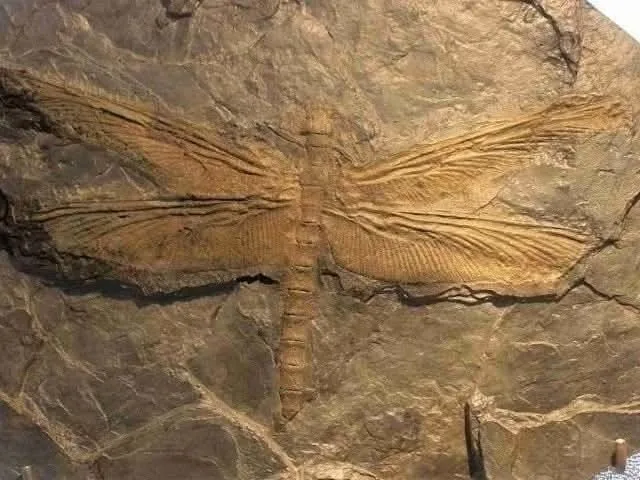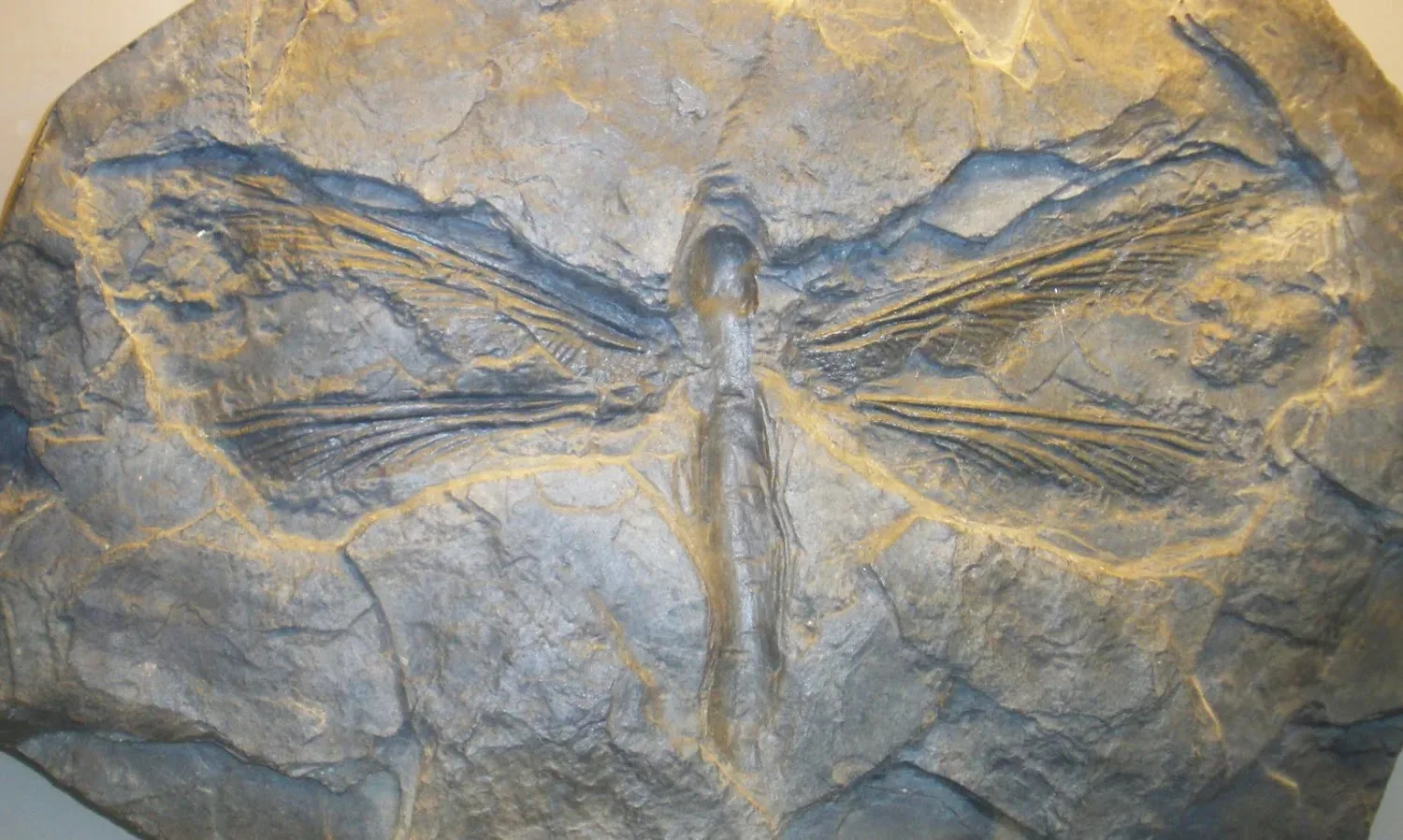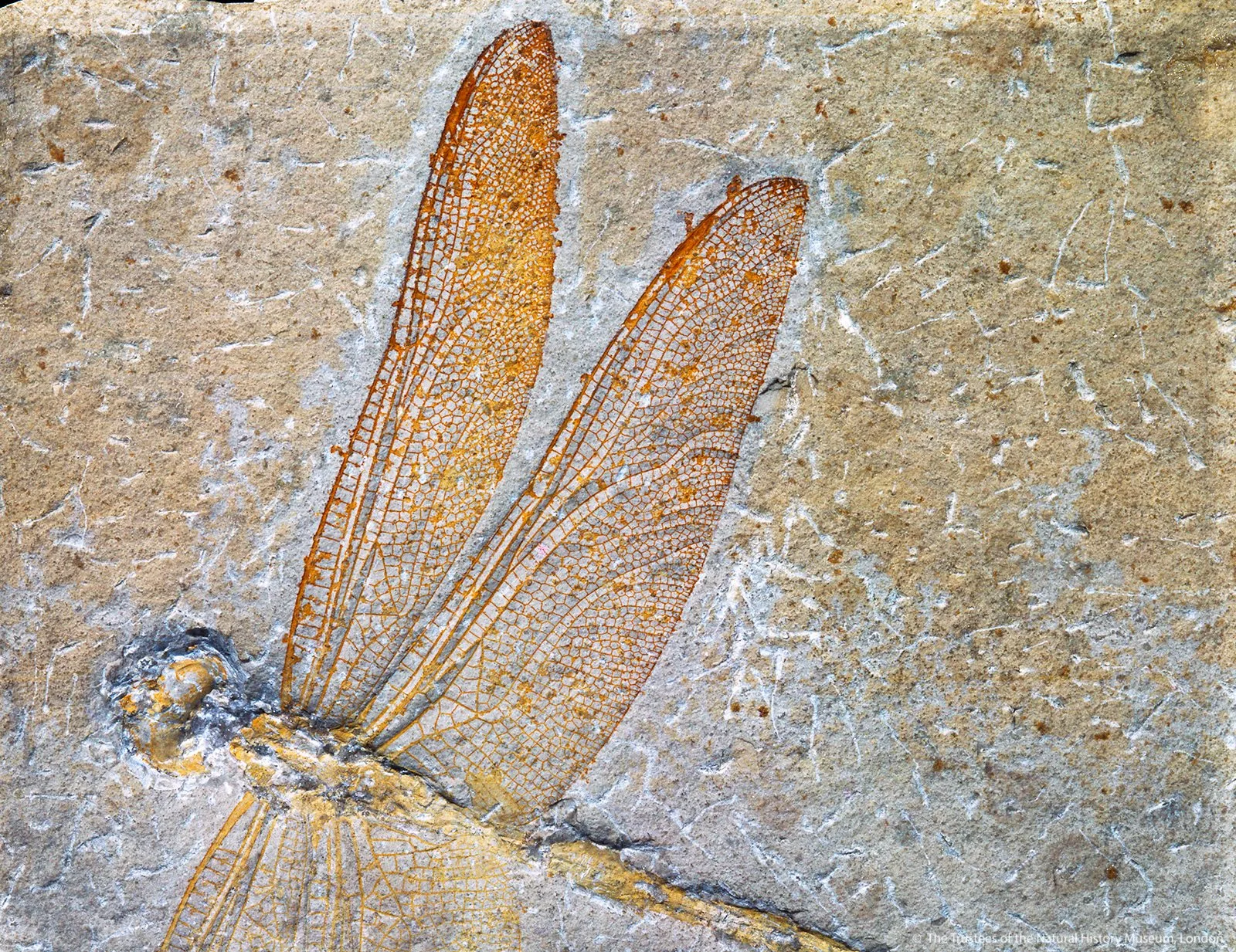In the ancient swamps of the Carboniferous to Permian periods, roughly 250–300 million years ago, colossal dragonfly-like insects ruled the skies. Fossils of these creatures, belonging to the extinct order Meganisoptera, reveal wingspans up to 2 feet (60–75 cm), dwarfing modern dragonflies. Unearthed in sites like the Commentry shale of France and the Mazon Creek beds of Illinois, these fossils, often of genera like Meganeura or Meganeuropsis, offer a glimpse into a prehistoric world of lush forests and oxygen-rich air.

A Prehistoric Giant
During the Carboniferous (359–299 million years ago) and early Permian (299–252 million years ago), Earth’s atmosphere had oxygen levels as high as 35%, compared to today’s 21%. This hyperoxic environment supported gigantism in insects, as their tracheal breathing systems, which rely on oxygen diffusion, could sustain larger bodies. Meganeura monyi, discovered in France in 1885, boasted a wingspan of about 27 inches (68 cm), while Meganeuropsis permiana from Kansas, dated to the Permian, reached up to 29 inches (73 cm). These dragonfly ancestors, not true dragonflies but close relatives, had robust bodies, powerful jaws, and veined wings preserved in stunning detail in fossil beds.
The fossils, often found in coal-rich sediments, show delicate wing structures and segmented bodies, capturing these predators mid-flight through a world of giant ferns and early reptiles. Their size and agility suggest they hunted smaller insects, possibly even early amphibians, in the humid, forested swamps that later formed coal deposits.

A Window into the Past
The discovery of these fossils, particularly in well-preserved sites like Commentry or Mazon Creek, revolutionized paleontology, revealing the scale of prehistoric insect life. The 2-foot wingspan, roughly the size of a modern hawk, underscores the unique conditions of the Carboniferous, when high oxygen levels and abundant prey allowed such giants to thrive. Unlike modern dragonflies, eganisoptera lacked some advanced wing features but were formidable fliers, likely darting through dense vegetation.

These fossils also challenge our imagination, showing a world where insects rivaled birds in size. Their extinction, likely tied to dropping oxygen levels and climate shifts in the late Permian, marked the end of an era of insect gigantism, leaving only their smaller descendants, like today’s dragonflies, which max out at 7-inch wingspans.

A Lasting Legacy
The giant dragonfly fossils, preserved in stone for 300 million years, remain a testament to Earth’s dynamic past. Displayed in museums like the Field Museum in Chicago or the Muséum National d’Histoire Naturelle in Paris, they captivate scientists and visitors alike. These ancient fliers, with their sprawling wings, remind us of a time when dragonflies were skyborne titans, weaving a story of evolution, adaptation, and the fleeting nature of dominance in an ever-changing world.





